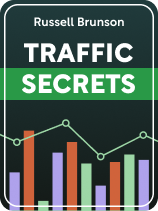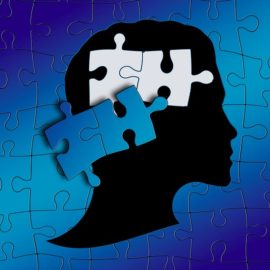

This article is an excerpt from the Shortform book guide to "Traffic Secrets" by Russell Brunson. Shortform has the world's best summaries and analyses of books you should be reading.
Like this article? Sign up for a free trial here.
What does a customer want? What drives someone to make purchasing decisions? How can understanding customer desires help businesses create more effective marketing strategies?
In Traffic Secrets, Russell Brunson explores the core desires that motivate customers to buy products or services. He identifies health, wealth, and relationships as the primary drivers behind consumer behavior.
Keep reading to discover what a customer wants and how you can leverage this knowledge to improve your marketing approach.
What a Customer Wants
Brunson writes that, when assessing your customers, you should start by considering their desires. So, what does a customer want? Brunson argues that, when people make purchasing decisions, they’re always trying to satisfy one of these three core desires:
- Health
- Wealth
- Relationships
He emphasizes that all products and services meet one of these needs, and, within those needs, people are trying to move away from pain and toward pleasure. To properly flesh out your customer avatar and fully understand your customer, you must determine which of these desires they’re focusing on.
| The Psychology Behind Our Core Desires Psychologists have long sought to identify and categorize the desires that drive human behavior. In 1943, Abraham Maslow proposed a theory that categorizes human needs into five levels of a hierarchical structure—from bottom to top, they are physiological needs, safety, love and belonging, self-esteem, and self-actualization. The lower-level needs like water and food must be met before higher-level needs like self-actualization (the desire to contribute to something larger than ourselves). While Brunson’s core desires of health, wealth, and relationships are not explicitly mentioned in Maslow’s theory, they’re related to different levels of Maslow’s hierarchy: Health: This core desire aligns with Maslow’s physiological needs—including food, water, and shelter—which are the most basic biological requirements for human survival. Without good health, individuals cannot fulfill higher-level needs. Wealth: We can associate wealth with Maslow’s concept of safety needs. Safety needs encompass financial security, stability, and resources that provide protection from physical and emotional harm. Wealth contributes to meeting these safety needs by ensuring financial stability and a sense of security. Relationships: Relationships correspond to Maslow’s belongingness and love needs, which involve social interactions, intimacy, and connection. They arguably also correspond to the two remaining needs of Maslow’s—self-esteem and self-actualization—because both of those needs involve interactions with other people. Brunson’s other theory—that customers make purchases to find pleasure and avoid pain—rests on the “pleasure principle.” This term, derived from Sigmund Freud’s psychoanalytic theory, refers to our instinctual seeking of pleasure and avoidance of pain, and marketing experts rely on it to frame purchasing offers because it’s been shown to be effective. |
Brunson writes that, if your product or service doesn’t fit obviously into one of these categories, or if it fits into more than one, you still have to figure out which one best applies and then focus on that. He uses the example of the razor company Gillette. People he interviewed had trouble identifying which category the company fits into—until they saw its TV ads, which highlight the closeness between a man and a woman made possible by Gillette razors and thus appeal to people’s “relationship” desire.
(Shortform note: If your company or product can fit into more than one core desire, as Gillette did, you may have more than one direction you might take your marketing messages. Gillette, for example, might have appealed to the wealth desire by associating a clean-shaven look with powerful people. If you have trouble deciding which direction to go, you might want to test a few marketing messages to see which produce a stronger response by measuring metrics like engagement, conversion, and sales.)

———End of Preview———
Like what you just read? Read the rest of the world's best book summary and analysis of Russell Brunson's "Traffic Secrets" at Shortform.
Here's what you'll find in our full Traffic Secrets summary:
- Tips to drive traffic to your online business
- How to find the right customers for your business
- The importance of social media for marketing






